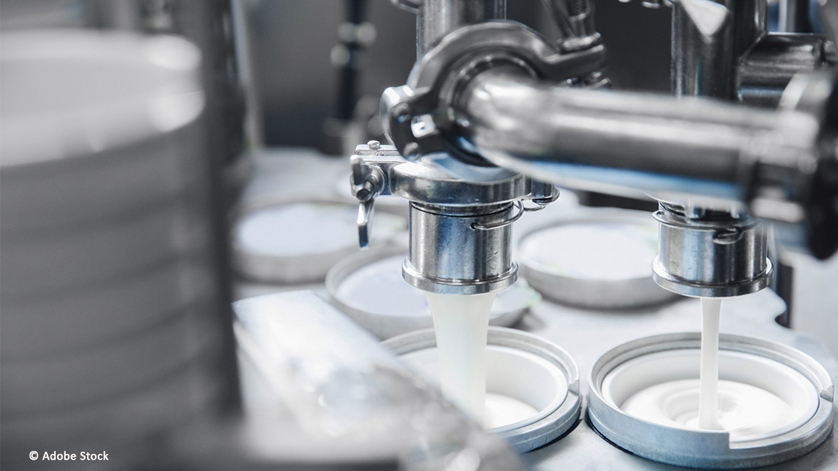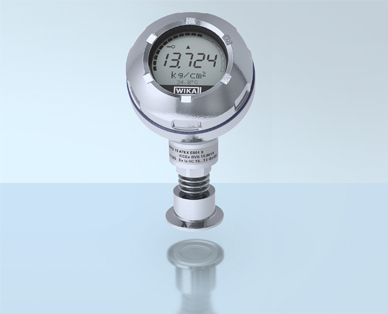
Level monitoring using a process transmitter with a flush diaphragm is an option for applications in the food industry. It is highly accurate and at the same time suitable for aseptic tanks. A manufacturer of dairy products (milk, cream and yoghurt), for example, uses the UPT-21 process transmitter in Hygienic Design from WIKA to control the level of its milk tanks.
Level is determined using the hydrostatic measuring method
Level monitoring using process transmitters is based on the hydrostatic measuring method. The transmitter is installed in, or near, the bottom of the tank and measures the pressure there. A downstream logic unit then calculates the level in the tank based on this value and the density. However, a prerequisite for such a measurement is ventilation of the vessel. In the case of the milk tanks, it is done through a sterilised filter.
The producer mentioned initially opted for process transmitters from a different source without a Hygienic Design for level monitoring. However, the selected instrument model could not cope with the challenging ambient conditions in the long term, i.e. with high air humidity and comparatively high temperatures. Both occur during or after cleaning processes. Due to the situation, moisture entered the process transmitter cases, which, in turn, led to corrosion of the electrical components. A correct pressure measurement was therefore no longer output.
Level monitoring with process transmitter in a high-temperature version

The UPT-21 hygienic process transmitter from WIKA with cooling fins for high-temperature applications
The company was looking for a way out. It chose the UPT-21 process transmitter from WIKA. This model features accuracy and a comprehensive Hygienic Design. WIKA designed a high-temperature version for the customer with cooling fins between the process connection and the transmitter head. The electronics case is thus decoupled from temperature differences. As a result, on the one hand it is protected from overheating, on the other hand no moisture is drawn into its interior due to the cooling effect. Otherwise, due to the cooled milk in the tank, the moisture could condense in the transmitter case and thus lead to corrosion damage and a defect in the measuring instrument over time.
The performance and robustness of the UPT-21 impressed the customer – after a year of trouble-free operation, they instrumented all critical measuring locations for level monitoring with the process transmitter from WIKA, in line with their HACCP concept (“Hazard Analysis Critical Control Points”). The investment in the high-temperature version has paid off – where particularly aggressive conditions prevail, the customer now only needs to replace the measuring instrument every two years instead of every two months. On the other hand, the initial installations from WIKA are still working at the other measuring locations. For the same period, the customer would have needed five of their previous instruments.
Note
Technical details on the model UPT21 process transmitter can be found on the WIKA website. There you will also find information on other measurement solutions for the food industry. If you have any questions, your contact will gladly help you.
Also read our posts
Pressure monitoring in UHT plant without risk of contamination
Lasting accuracy for diaphragm seal systems for vacuum process
Diaphragm seal systems with TRI-CLAMP® connection are NovAseptic® compatible
Hygienic pressure gauge: IP68 with cleaning from the outside
Hygienic M12 coupler connector for thermometer connection head

